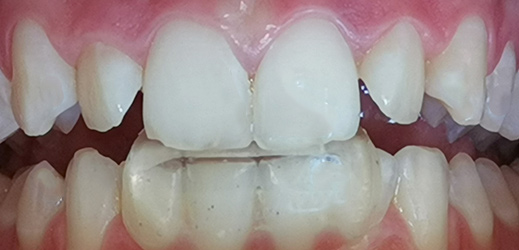It can only be ascertained by a full examination if pain is caused by night time tooth grinding or clenching. If necessary, a device can be fitted which is worn at night.
It can be easily inserted over the front teeth, and prevents nocturnal tooth grinding and clenching.















